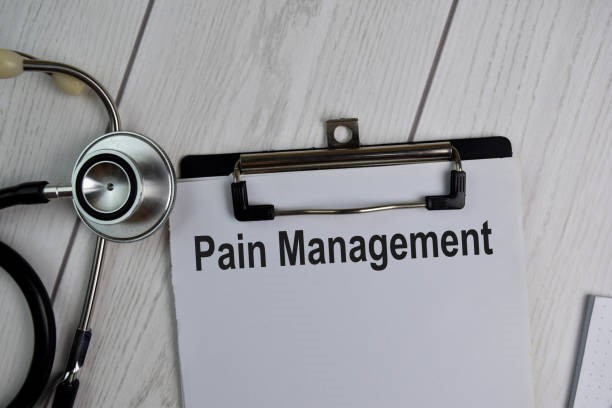The Key to Success: Understanding the Financial Strategies Behind Pain Practices
4 min read
Introduction
Importance of Efficient Billing Strategies in Pain Management Practices
Efficient billing strategies are the cornerstone of success for any pain management practice. In an industry where reimbursement rates are constantly evolving, understanding how to navigate the complex landscape of medical billing is crucial. Effective billing not only ensures timely payments but also maximizes revenue, allowing practices to thrive and provide high-quality care to patients.
Overview of Financial Challenges Faced by Pain Management Practices
Pain management practices face numerous financial challenges, ranging from declining reimbursement rates to increasing overhead costs. These challenges can significantly impact the financial health of a practice, making it imperative for practitioners to adopt proactive strategies to mitigate risks and optimize revenue streams.
Objectives of the Article
This article aims to provide insights into the financial strategies essential for the success of pain management practices. By understanding payment models, implementing efficient coding practices, and leveraging technology, practices can enhance their financial stability and thrive in an increasingly competitive healthcare environment.
Setting Up a Solid Foundation
Understanding Payment Models in Pain Management
Pain management practices must familiarize themselves with various payment models, including fee-for-service, value-based care, and bundled payments. By understanding the intricacies of each model, practices can tailor their billing strategies to maximize reimbursement and minimize financial risks.
Implementing Efficient Coding Practices
Accurate medical coding is crucial for ensuring proper reimbursement and avoiding claim denials. Practices should invest in training staff members to accurately code procedures and diagnoses, thereby optimizing revenue and reducing billing errors.
Ensuring Compliance with Regulatory Requirements
Compliance with regulatory requirements, such as HIPAA and Medicare guidelines, is essential for avoiding penalties and maintaining the integrity of billing practices. Practices should establish robust compliance protocols and regularly audit billing processes to ensure adherence to regulatory standards.
Maximizing Revenue Streams
Leveraging Telemedicine Services for Increased Reimbursements
The advent of telemedicine presents a unique opportunity for pain management billing practices to expand their reach and increase revenue. By offering telemedicine services, practices can attract new patients and capture additional reimbursements while providing convenient access to care.
Optimizing Revenue Cycle Management
Effective revenue cycle management is essential for maximizing revenue and minimizing revenue leakage. Practices should implement automated billing systems, monitor claims processing, and proactively address claim denials to streamline the revenue cycle and improve financial performance.
Negotiating Contracts with Payers for Fair Compensation
Practices should actively negotiate contracts with payers to ensure fair reimbursement rates and favorable payment terms. By advocating for fair compensation, practices can improve their financial viability and maintain sustainable operations.
Mitigating Financial Risks
Managing Accounts Receivable Effectively
Practices should implement proactive strategies to manage accounts receivable and minimize outstanding balances. By closely monitoring aging accounts and implementing effective collection policies, practices can improve cash flow and reduce financial risks.
Implementing Cost-Containment Strategies
Controlling overhead costs is essential for maintaining financial stability in pain management practices. Practices should evaluate expenses regularly, negotiate vendor contracts, and explore opportunities for cost savings to mitigate financial risks and improve profitability.
Investing in Technology for Streamlined Billing Processes
Technology plays a pivotal role in streamlining billing processes and improving efficiency. Practices should invest in electronic health record (EHR) systems, revenue cycle management software, and other technological solutions to automate billing workflows and enhance productivity.
Strategies for Long-Term Success
Building Strong Relationships with Payers and Patients
Cultivating strong relationships with payers and patients is essential for long-term success in pain management billing services. By providing exceptional customer service and demonstrating value to payers, practices can foster loyalty and support sustainable growth.
Monitoring Key Performance Indicators for Financial Health
Practices should regularly monitor key performance indicators (KPIs) related to financial health, such as revenue growth, accounts receivable aging, and reimbursement rates. By analyzing KPIs, practices can identify trends, address inefficiencies, and make data-driven decisions to improve financial performance.
Adapting to Changing Regulatory Landscape in Healthcare
The healthcare industry is constantly evolving, with new regulations and compliance requirements emerging regularly. Practices must stay abreast of changes in the regulatory landscape and adapt their billing strategies accordingly to ensure compliance and mitigate financial risks.
Conclusion
Recap of Key Points Discussed in the Article
Effective billing strategies are essential for the success of pain management practices, allowing them to navigate financial challenges and thrive in a competitive healthcare environment. By understanding payment models, maximizing revenue streams, and mitigating financial risks, practices can achieve long-term financial stability and provide high-quality care to patients.
Importance of Financial Stability in Pain Management Practices
Financial stability is paramount for pain management practices to fulfill their mission of providing compassionate care to patients. By maintaining financial stability, practices can invest in staff training, technology, and infrastructure, ultimately enhancing patient outcomes and driving practice growth.
Recommendations for Implementing Effective Billing Strategies
To implement effective billing strategies, pain management practices should prioritize staff training, invest in technology, and foster strong relationships with payers and patients. By adopting a proactive approach to billing, practices can optimize revenue, reduce financial risks, and position themselves for long-term success.
Frequently Asked Questions
What are the most common challenges faced by pain management practices in billing?
Common challenges faced by pain management practices in billing include declining reimbursement rates, claim denials, regulatory compliance, and managing accounts receivable effectively.
How can pain management practices increase revenue through effective billing strategies?
Pain management practices can increase revenue through effective billing strategies by leveraging telemedicine services, optimizing revenue cycle management, negotiating contracts with payers, and investing in technology for streamlined billing processes.
What role does technology play in improving financial processes for pain management practices?
Technology plays a crucial role in improving financial processes for pain management practices by automating billing workflows, reducing billing errors, enhancing revenue cycle management, and providing insights through analytics and reporting functionalities. By leveraging technology, practices can improve efficiency, maximize revenue, and achieve financial success.







